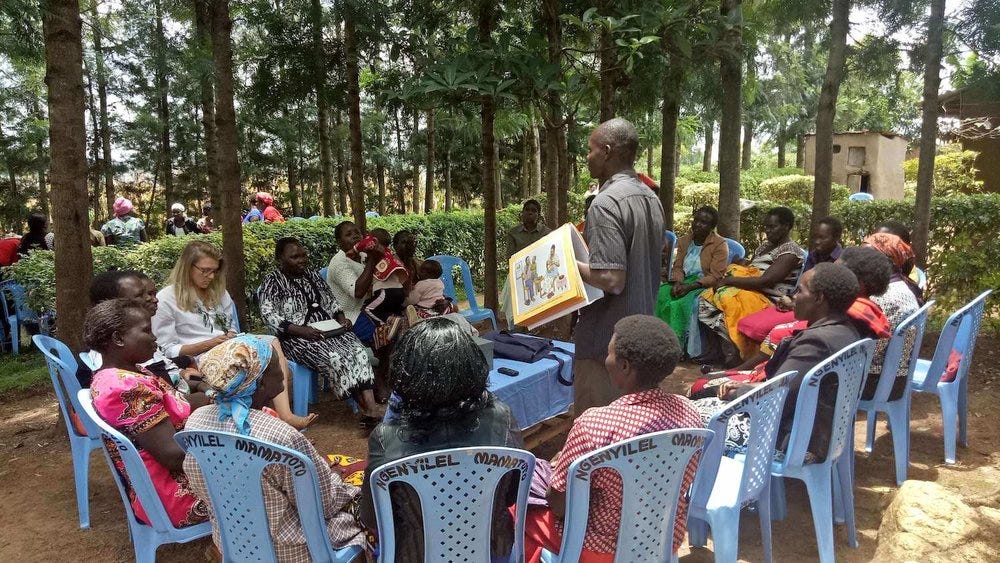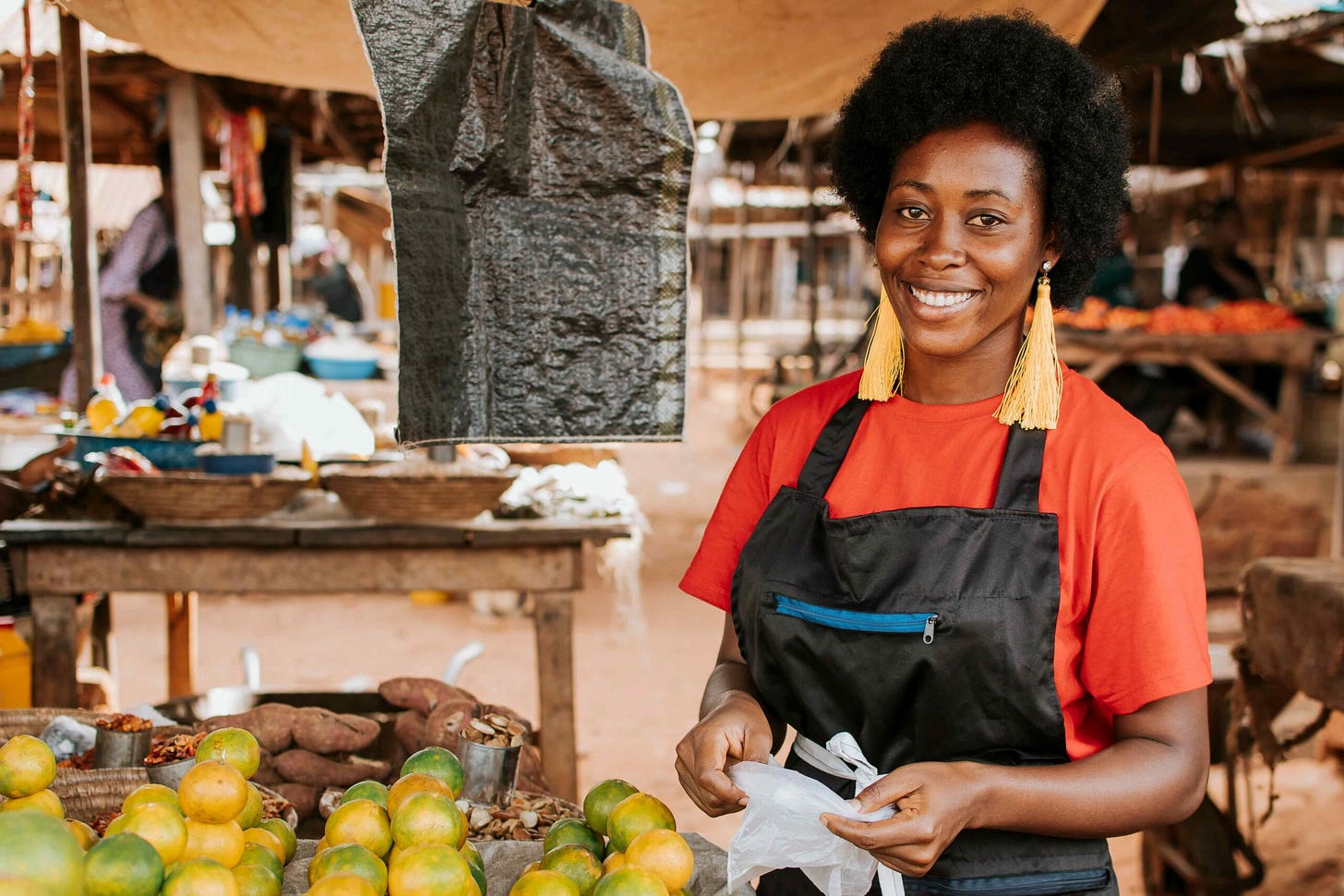Pulse54: Lending to Africans is tough business
Africa's credit landscape is marred by unbanked millions, stringent loan hurdles, and mobile lending risks. Can community groups and AI-driven solutions unlock inclusion?
Hello folks! Welcome to another edition of Pulse54.
Let's dive right into today’s topic.
But if you haven’t subscribed to Pulse54, ensure you do so via the button below.
Credit makes the world go round.
Governments, businesses, and individuals all rely on borrowing to function and grow.
However, accessing credit is a major challenge across Africa.
In 2023, while global debt hit a record $307 trillion, many Africans still struggled to get loans and other forms of credit.
There are several key reasons why lending to Africans is uniquely difficult compared to other parts of the world:
Lack of bank accounts
One of the biggest barriers to credit access in Africa is the lack of bank accounts and formal financial services for a large portion of the population.
Countries like Morocco (71%), Egypt (67%), and Nigeria (60%) rank among the highest globally for unbanked populations.
Across Africa, there are over 350 million people who have never had a bank account at all.
Without this basic financial footprint, it becomes extremely difficult to access credit from traditional lenders like banks. This unbanked population is automatically excluded.
Strict requirements
Even for those Africans who do have a bank account, getting approved for a loan is an uphill battle.
Banks have strict requirements like demonstrating a steady income, maintaining a minimum balance, and routing all income through the account.
These kinds of conditions are extremely tough to meet for the average person in Africa. Millions are unemployed or working informal jobs with unstable income flows.
And with an average monthly income of around just $123 in a country like Kenya, few can afford to keep substantial funds perpetually sitting in an account.
As a result, these bank requirements serve as an artificial barrier that shuts out wide segments of the population from accessing formal credit, regardless of their creditworthiness.
Credit demand exceeds supply
Despite the access challenges, the demand for credit in Africa is huge and rising rapidly. In Nigeria alone, 70% of the banked population still cannot get loans.
And across sub-Saharan Africa, the ratio of credit to GDP is only 18%, far below other developing regions.
With such massive unmet demand, it's no surprise that fintechs have flooded in with mobile lending apps promising quick and easy access to credit with few requirements.
However, this digitized lending boom has sparked a new set of issues.
Promising but digital lending has its drawbacks
While mobile lending apps have made getting a loan more straightforward, their practices are plagued by consumer risks.
Common problems include exorbitantly high-interest rates, violations of data privacy, and unethical collection practices like harassment of borrowers' contacts.
Perhaps the biggest pitfall of mobile lending is that the same factors enabling easy access – minimal due diligence and loose requirements – also enable people to take on loans they cannot afford to repay.
When this happens, borrowers' credit ratings get dinged, making it even harder for them to access decent credit down the road.
On the flip side, when lenders do try to lend more responsibly with stronger vetting, they struggle with financial sustainability as delinquencies and charge-offs eat into their returns.
In 2022, major digital lenders like TymeBank and FairMoney saw surges in credit impairment charges as bad loans mounted.
Africa's community-led solutions
Amidst the challenges of modern lending models, one historical practice has enabled Africans to successfully provide credit to each other for generations: community-based lending groups.
Known as chamas in East Africa, susus/tontines in West Africa, and stokvels in South Africa, these trusted, tight-knit groups allow members to contribute small amounts on a rotating basis.
The pooled funds are then used for savings, and investments, and issuing credit to group members when needed.
Far from just casual saving clubs, some women-led chamas in Kenya have grown into sophisticated investment firms, acquiring real estate and managing multi-million dollar portfolios from humble beginnings.
The core strength of these groups lies in the social capital, transparency, and accountability created through being a small community.
Unlike banks and apps with no stake on the ground, chamas cannot afford to lend recklessly and must govern themselves responsibly.
While digital lenders struggled with profitability and consumer risks, these traditional models naturally align incentives in a way that suits Africa's low-trust, low-income realities.

Credit infrastructure-as-a-service
Historically, financial institutions in Africa have relied heavily on credit bureau scores and basic demographic data to make lending decisions.
However, this conventional approach has significant limitations in extending credit access across the continent.
A major shortcoming is that these traditional underwriting methods automatically disadvantage the millions of Africans who are unbanked, informally employed, or lack a robust financial footprint.
This systemic exclusion is a key driver of why Africans, especially those in remote areas, suffer some of the lowest levels of credit access globally.
In recent times, new digital lending models leveraging artificial intelligence (AI) and machine learning have emerged as a potential solution.
Several Africa-focused fintechs such as Yabx, Indicina, and Creditclan are pioneering these alternative credit scoring approaches aimed at underwriting the underserved.
Rather than solely relying on traditional data sources, these AI models analyze a wide range of digital footprints and behavioral data.

Mobile usage patterns like airtime top-ups, mobile money transactions, utility payments, and other non-traditional data points are fed into machine learning algorithms.
This broader data pool allows the models to construct predictive risk profiles, even for potential borrowers lacking extensive credit histories.
The algorithms can detect insights like how much money is allocated towards small business needs versus personal consumption.
Fintechs then provide these alternative credit scoring solutions to banks and microfinance institutions operating in markets where credit bureau coverage is limited.
By unlocking deeper insights into cash flow patterns and consumption behavior, these AI-powered tools can open up lending channels to informal populations previously considered too risky or unbankable.
The way forward
Extending affordable credit across Africa is an enormous challenge without any simple solutions.
Top-down models like banks and fintechs have gotten stuck between being too exclusive or too uncalibrated.
However, the proven success of chamas hints that bottom-up, community-based systems resonate better by tapping into existing social dynamics.
Perhaps the future will involve fintechs building atop these organic foundations of trust, instead of trying to disrupt them completely.
Regardless of the approach, any solution will need to navigate the fundamentals of lending prudence and risk management, while creatively adapting to the financial realities that make Africa unique.
Easy lending is not enough – Africa needs inclusive yet sustainable credit models.
Only by cracking this formula can the power of credit be genuinely unlocked across the continent and enable more Africans to borrow, build, and prosper.
You can also download the Daba app to access investment opportunities and get daily bite-sized insights into African economies and industries.
That's all for this week.
Until next time!





